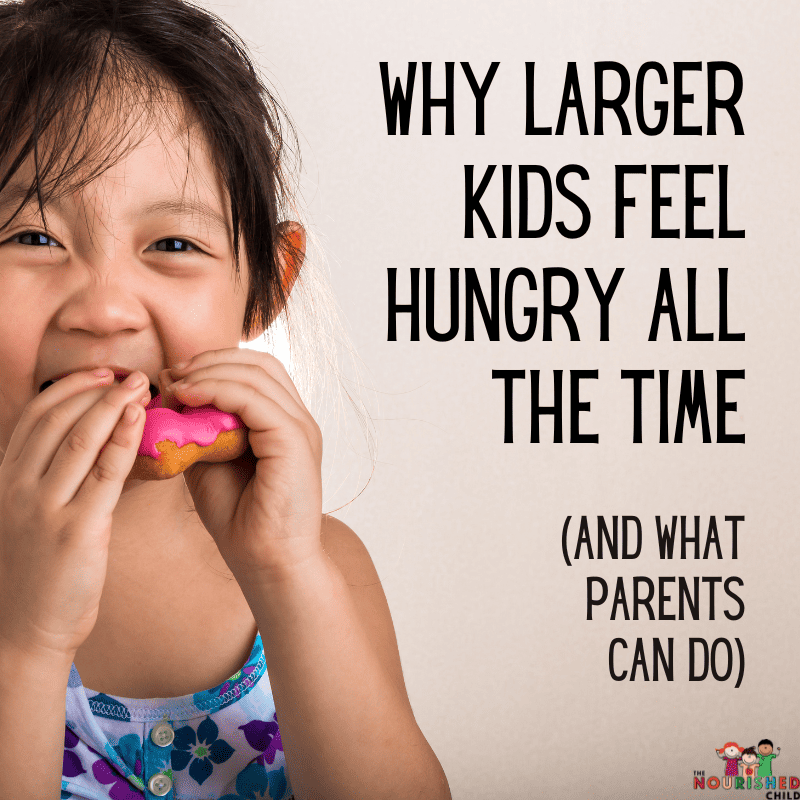6 Principles for Introducing New Foods to All Children
February 24, 2024
Learn the principles for introducing new foods to all children so they feel safe, and learn to like a variety of foods over time.
Introducing new foods to children is a goal for many parents. When you can help your child taste a variety of foods, odds are higher they will incorporate more foods into their diet.
But every child is different.
One child may react to new foods very differently than another child, even within your family. Some of this is due to appetite traits, those genetically-based tendencies to react and engage with food, like getting excited about food or being picky eaters.

What Happens When Children Explore New Foods?
A recent three-year longitudinal study looked at sensory exploratory behaviors in over 240 preschool children and how they related to whether children accepted new foods or not.
At age four, children were asked to taste four new foods. An experimenter recorded the child’s displays of smelling, licking, spitting, refusing to eat, and acceptance of the new food. They repeated these taste tests at four and a half years, five and a half years, and six and a half years of age.
The scientists totaled the number of foods these children smelled, licked, spit out, refused, and accepted at each point in time. They also looked at the children’s individual sensory behavior tendencies and how they related to their food acceptance.
The results? Researchers found that spitting and refusing to eat decreased over time, and food acceptances increased. In other words, the more kids were exposed to different foods and the more time they had to engage with it, the better they accepted them.
More exploratory behaviors promoted familiarity with different foods and this helped children learn that new foods were acceptable and safe to consume.
6 Principles for Introducing New Foods to All Children
Many parents want their kids to try new foods, eat them, and like them. But they run into obstacles, like picky eating. Here are some principles to help make the experience of introducing new foods more engaging and positive for your child.
Avoid Any Pressure to Eat (Even in Older Children)
Pressuring a child to eat is counterproductive, often resulting in less eating or food refusal.
What does pressuring look like? Heavy encouragement to try something new. Asking your child to take another bite. Requiring a certain numbers of bites in order to be excused from the table or have dessert. Comparing one child’s eating to another child’s.
These seemingly innocent, innocuous parental requests often create more pressure for the child, and may incur resistance.
In order to keep themselves safe and avoid pressure, some children will refuse to try new foods.
If you find yourself at the dinner table talking about food you want your child to eat or try, or find yourself encouraging or nagging your child to take a bite of this or that, or say, “Just try it,” you may be unintentionally putting more pressure on your child.
Minimize Bribes or Tradeoffs for New Foods
You may recognize a tradeoff if you find yourself offering dessert for a bite of a new vegetable. Or, offering another bribe like extra TV time, a toy at the table, or a later bedtime. In the feeding research arena, these are called rewards.
They’re meant to incentivize healthy eating or trying something new.
But bribes or rewards are external motivators. When we use rewards – especially food rewards – to motivate children to try something new, children do not build internal motivation to try new foods.
Instead, they begin to rely on external motivators like dessert or another bribe. If those aren’t available, they’re unlikely to try or eat the foods you want them to.
What happens when kids are offered a tradeoff for eating something “healthy?” Their perception of food – what’s healthy or good and preferred – can change.
For instance, look at broccoli versus ice cream. If children get ice cream as a reward for trying or eating broccoli, there’s a very good chance they’ll favor ice cream as the better, preferred food. Research shows that kids may think ice cream is more important than broccoli or other types of raw vegetables.
This doesn’t really help children try lots of different foods from the food groups, or learn to prefer nutritious foods. Rewards and other external motivators may undermine your efforts at introducing new foods while squelching your child’s natural curiosity and motivation to explore healthy foods.

A Small Amount is Better
Contrary to popular opinion, smaller is better when it comes to introducing new foods to children. When kids get full plates of foods, they can get overwhelmed and turned off, making it harder for you to get them to try something new.
When you’re offering your child something new, make the first bite as small as the tip of your pinky finger, like the size of a green pea or a kernel of corn. Many children will feel more confident about tasting new things because they’ll feel they can handle it.
Small portions on a child’s plate removes the chance of overwhelm and resistance.
Encourage Sensory Exploration
Young children are little explorers despite being a fussy eater. A child can kiss a piece of food they’ve never had. They can lick it. They can chew it. They can spit it out. These interactions engage the senses.
Toddlers can touch, pick up, smell, kiss, lick, put food in the mouth, chew it, spit it out if they don’t like it, or swallow it. All of these are legitimate ways to engage with and “try” a new food.
Toddlers don’t need to know that broccoli has a lot of fiber, or that a plant-based diet is a healthy way to eat. They don’t need to understand their nutritional needs. Rather, they need basic descriptor words so they can build their food language.
Preschoolers and older children should engage regularly with a variety of food.
Reading books about food, cooking together, participating in food preparation and cooking skills like stirring batter or tearing up lettuce, as well as shopping together, helps them learn about food in real time and make food choices.
This engages their drive for autonomy.
Preschoolers are receptive to taste tests. Let them taste several foods using tiny little spoons. Or, line different foods up and ask them to describe them using their senses.
You can ask, what does this food look like? What does it smell like? What does it taste like?
Young children are building their senses and mastering recognition, especially smells and tastes and textures.
Engage the Developmental Stage
Young children desire autonomy, and this includes their bodies and what goes into their mouths.
Sadly, some parents will reprimand their children for not trying a food the first time, or liking a food. Not only is this counterproductive to introducing new foods, it also interferes with a child’s body autonomy.
If your child is refusing to try a new food, that’s okay. It’s a good idea to use the phrase “You don’t have to eat it.” It disengages any perceived discipline or pressure to eat. Parents do well when they are nonchalant when their child refuses specific foods.
Remember, there are many foods kids can taste and try. There’s no timeframe. You, nor they, are on a trajectory. Tomorrow’s another day. As parents, let’s be mindful of our children’s autonomy and watchful of their reactions.
If you see your child struggling or being hesitant or resisting, let them disengage from food.
Taste buds do change over time. They get more mature, more accepting, and the more you expose your child in different ways to new foods, different shapes, and different flavors, the more likely they will accept them.
When you try to engage children with new foods, the whole goal is to get them to taste it on their own volition. If they can cross that first barrier, such as touching their lips with a raspberry, licking an apple or an Asian pear, or “kissing” a piece of seasoned cauliflower, for example, it will be an effective first step. It gets flavor on their taste buds.
And that’s a huge win.
Young kids need to experience, engage with, and taste food first before they eat it.
Keep these principles in mind for the long run, especially as you’re bringing new foods to the table. In doing so, I believe you will have an easier time introducing new foods and your child will be more accepting of new things.











